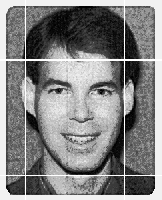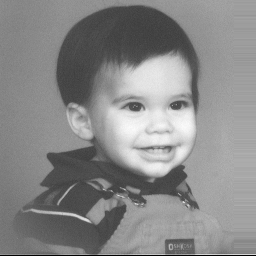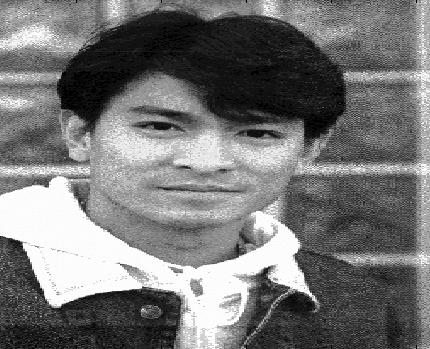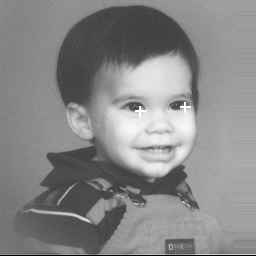Binary Matched Filtering
Binary Matched Filtering with Pre-Processing
Normalized Matched Filtering
Techniques to Improve Matched Filtering
Restricted Search Areas
Matched Filter with Restricted Search Area
by Robert Sparr

Another approach to improving our matched filter results involves restricting the search region to the area of the face where the eyes are expected to be found. This approach would require only the rough estimation of the boundaries of the face in the image. This approach would require the restriction, however, that each image would contain exactly one face.
Other researchers have already developed methods to estimate the edges of a face and the rough location of the eyes in an image. Crowley, for instance, describes an approach based on the use of edge detectors to determine the facial boundaries and the eye area. Crowley's method requires a non-oblique facial view with direct lighting and no shadows on the face.

Figure 8. Application of Crowley's face framing algorithm to an image of some weirdo.
We implemented Crowley's algorithm and tested it on several images as a study of a related side-topic of interest. As figure 8 shows, Crowley's algorithm does work on images which meet (or come close to meeting) Crowley's criteria. Note the the algorithm detected edge between the ear's shadow and the background on the left side rather than the cheek. The algorithm did successfully detect the more heavily shadowed right cheek, however.
Additional tests of Crowley's algorithm on other facial images confirm the sensitivity of the method to Crowley's required conditions. We found the Crowley's algorithm failed in cases involving even slightly oblique facial views, obscuration of the forehead by hair, or unsuitable lighting. Crowley's algorithm would therefore be most applicable to systems guaranteeing controlled conditions, such as security systems.



Figure 9. Images on which Crowley's face framing algorithm fails.
Our results with Crowley's algorithm suggest that methods to narrow the search region for eyes may be designed successfully for limited scenarios. The development of additional methods lies outside the scope of this project, but this would be a good topic for further reseach.
If we postulate an effective method of restricting the search region for each eye to the appropriate quadrant of the human face, we find that the application of a binary matched filter with normalization does find both eyes reliably, even when using a filter designed for a different image. For the image in figure 10, for example, we obtained the same result using a filter designed using the right eye from this image and one designed using the right eye from the Lenna image.

Figure 10. Locations of detected eyes with the binary normalized matched filter approach applied to the two upper quadrants of the face.
Previous Page Return to Main Page

jchen@micro.ti.com
tdorney@ti.com
sparr@owlnet.rice.edu
Last updated on May 3, 1997
Copyright © 1997 All rights reserved.